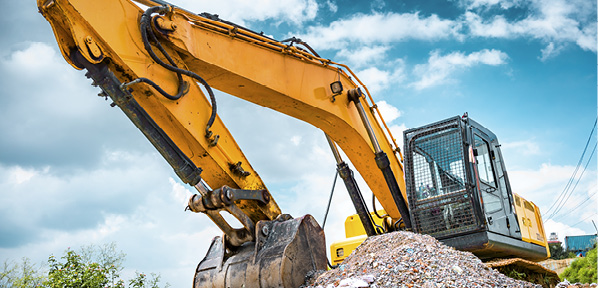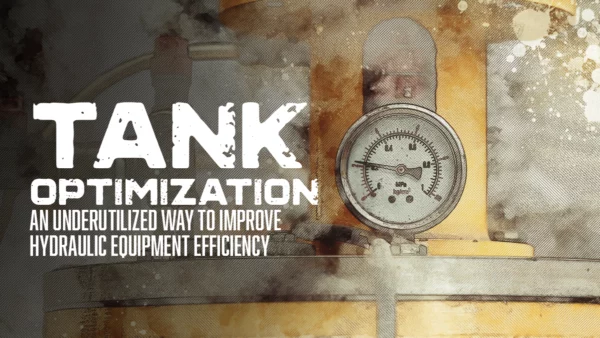Compressed Air Water Problems
By Ron Marshall

Joe, the maintenance manager, was pulling out his hair in frustration. He had been experiencing constant water problems in his compressed air, and he thought he could fix the problem with a new air dryer. He thought wrong, and there the problem was again, water dripping from his pipes, the contamination getting through his dryer and into his plant. Out of his drains came a rusty, oily mixture of contaminants that ruined his air tools and clogged up his production machinery.
Dryer Choice
Joe’s supplier was more than glad to sell him a new dryer when he asked. His dryer is a refrigerated style that has an internal cooling system inside. It cools the flow of compressed air down to just above the freezing point of water, then removes the condensed free water with a water separator and drain. Since his compressor was rated at around 400 cfm, Joe chose a 400 cfm dryer. The dryer was installed on a fabricated mezzanine right above his air compressor in the boiler room, due to the lack of space. There wasn’t enough space for a receiver tank, so the tank was placed outside the room on a tap in the main piping.
Assessment
Joe’s power utility was offering free compressed air assessments, so he took a chance and invited them in to have a look. It didn’t take long for the auditor to find a number of issues that were causing his problems.
The auditor quickly checked the inlet temperature to his air dryers with an infrared gun and looked at the filter and dryer drains. He also examined the location of the storage receiver and how the compressed air flowed into the plant.
Before telling his findings, the auditor gave Joe a primer on compressed air water content and the effects of temperature. Here’s a summary:
- The compressed air coming out of an air compressor is totally saturated and the amount of water vapor it contains depends on the temperature of the air.
- Every 20 degree F increase in air temperature doubles the amount of water.
- A common air dryer design rating follows the “three 100 rule”, no more than 100 degree F inlet compressed air temperature, 100 degree F ambient temperature at 100 psi. If temperatures are higher than this, or pressure lower, the dryer capacity is negatively affected, requiring a larger dryer than the capacity of the compressor.
- Dryers are not designed to process free water (already condensed).
Assessment Results
After the lecture, the auditor took Joe for a tour of his compressed air system. The auditor pointed out the following problems and gave Joe a big final surprise:
- Being located in a hot boiler room, the air-cooled compressor had elevated temperatures. The discharge temperature of the compressor was too hot, running near 100 degrees F almost all the time.
- The cooling air discharge of the compressor came out the top. The auditor pointed out that the path of the hot discharge air was directly onto the air dryer installed above the compressor. This caused the dryer to experience ambient temperatures higher than its rating.
- There were no storage receivers on the wet side of the air dryer due to the lack of space. The piping from the compressor flowed directly into the air dryer.
- The storage receiver on the outside of the room was only T-tapped. The compressed air did not flow through the tank, so no free water collected there.
- And finally, the auditor challenged Joe to do his own assessment of the condensate drain on his compressor’s water separator. This is where the free water that condenses after the air is cooled by the compressor aftercooler needs to be removed from the system before entering the dryer. This was a big challenge for Joe. He searched high and low for the drain, until the auditor pointed out there wasn’t one. Some brands of air compressors do not come with water separators and drains to save manufacturing costs, yet the separator and drain comprise one of the most important parts in terms of air quality.
Joe could see he had work to do. On the auditor’s recommendations he relocated his air compressor and dryer to near his loading bay, a cooler spot in the plant, and an area that could benefit in winter months from the heat of compression that comes from his equipment. He installed a water separator on the outlet of his compressor and a wet receiver before his dryer where the compressed air could cool and drop its moisture. He made sure the dryer was well away from the hot compressor discharge. And he reconfigured his dry receiver so the compressed air flowed through the receiver, allowing it to catch water should the dryer fail for any reason. Joe topped this all off by installing energy saving airless drains on all his separators, filters, receivers and dryers. He was particularly careful to add a strainer before each drain and to design the condensate removal piping in a way that he could easily test each drain to ensure it was working.
The water problems that were plaguing his plant have now gone away, and Joe has a great sense of satisfaction. He was very pleased with the results of his compressed air assessment and also surprised about a few other recommendations. The auditor had also informed him that his aging air compressor could be replaced with a new more efficient type that could save him 50% of his compressed air electricity costs, and, on top of that, be partially paid for through an incentive program. So, as part of his project, he replaced his compressor with a new variable speed drive unit, and upgraded his dryer to a properly sized cycling style dryer that also saves energy. This time his compressor came with a water separator and efficient drain. His old unit became a standby. Months into the completion of the project Joe could see the big decrease on his energy bill, which made him smile broadly.
Ron Marshall is owner of Marshall Compressed Air Consulting, a company that specializes in compressed air efficiency assessments.
Visit www.compressedairaudit.com
Join the LinkedIn discussion group: Compressed Air Efficiency







